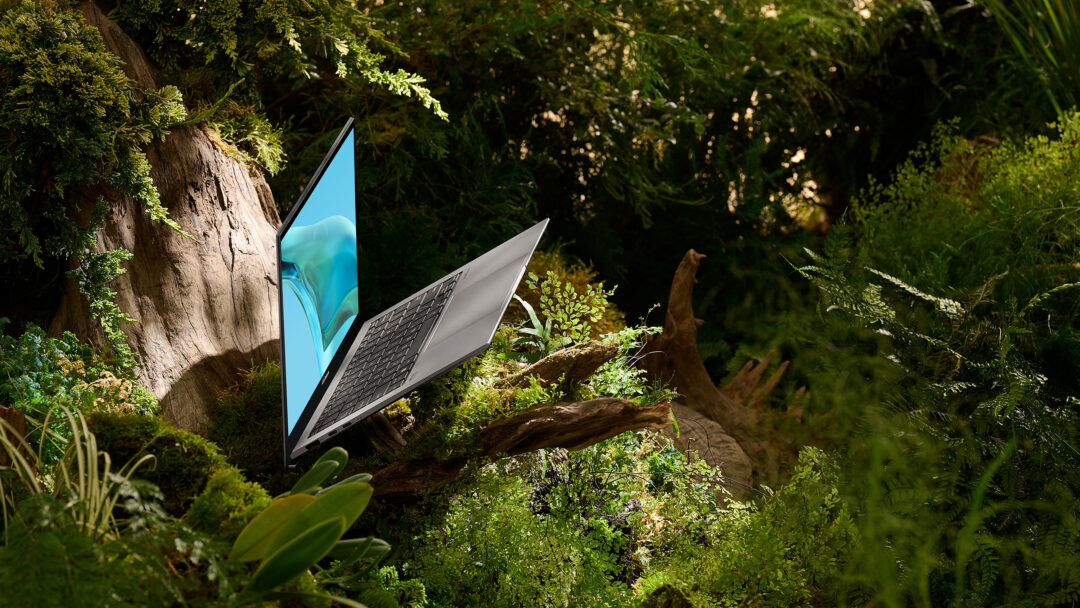The Ultrabook is the ultimate laptop. A computer that’s so light to carry and takes up so little space that you hardly notice it’s in your bag. Preferably without compromising on performance.
The Asus Zenbook S13 fulfils all the expectations of an ultrabook: It takes up the space of a sheet of A4 paper and weighs just one kilo. And the thickness is just over 1 centimetre. This puts it in the most exclusive segment of ultrabook PCs. So far, we’ve tested less than a handful of computers that weigh or take up as little space as the Asus – but never one that was actually lighter or smaller.
Full-featured screen
With such tight demands on the exterior, you’d think compromises would have been made on the hardware side. But that doesn’t seem to be the case. To start with the screen, it’s a full-blown and colourful OLED display with a resolution of 2,880 x 1,800 pixels. And while we’d prefer true 4K resolution, the 2.8K is plenty for a 13.3-inch screen. The only thing we miss is touch functionality. Not just because it looks flashy, but also because touch comes into its own in the very places where an ultraportable shines: Cramped auditorium tables, meeting rooms and aircraft seats.
As with previous Zenbook models, the screen is hinged on the underside of the chassis. This means that the rear edge of the PC is slightly lifted from the table when the screen is opened, which is smart as it provides both a better typing position and better airflow in the case.
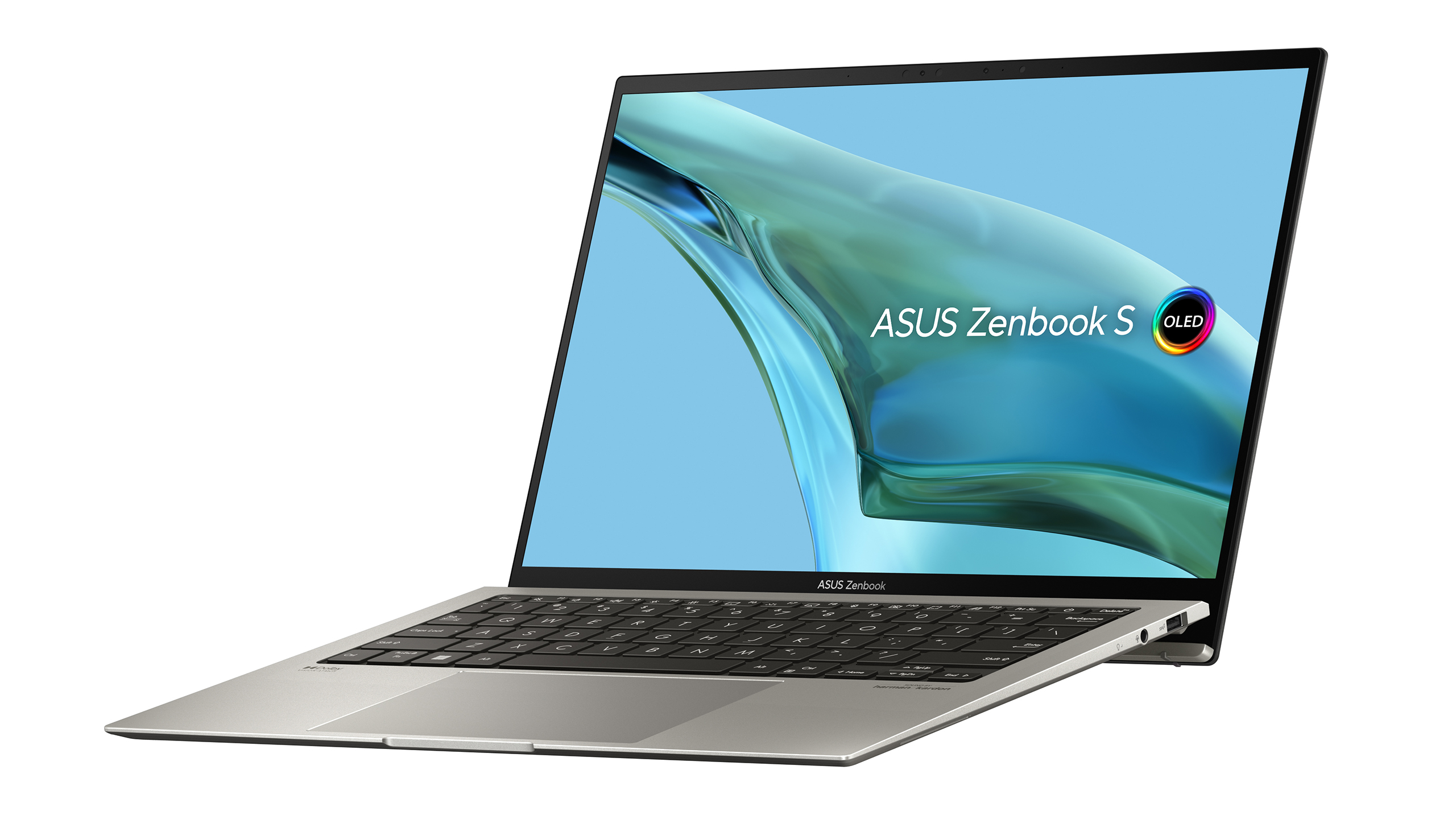
Excellent keys
For obvious reasons, the width of the keyboard is slightly reduced. However, as only the outer rows of keys are narrower, this does not affect the ergonomics. In fact, the keyboard on the Zenbook S13 is one of the most comfortable and responsive ultrabook keyboards we’ve tried in a long time.
The keyboard could have been wider, but if the keys had reached all the way to the edge like on the Dell XPS 13 Plus, there wouldn’t have been room for so many ports.
We have often criticised Asus for being too miserly with the ports. As if the lack of connections was a particularly exclusive feature. The Zenbook S13 actually has what you need: Two USB-C ports, an HDMI output and an old-fashioned USB-A port. This means you can use the machine for most everyday tasks without having to worry about bringing adapters.
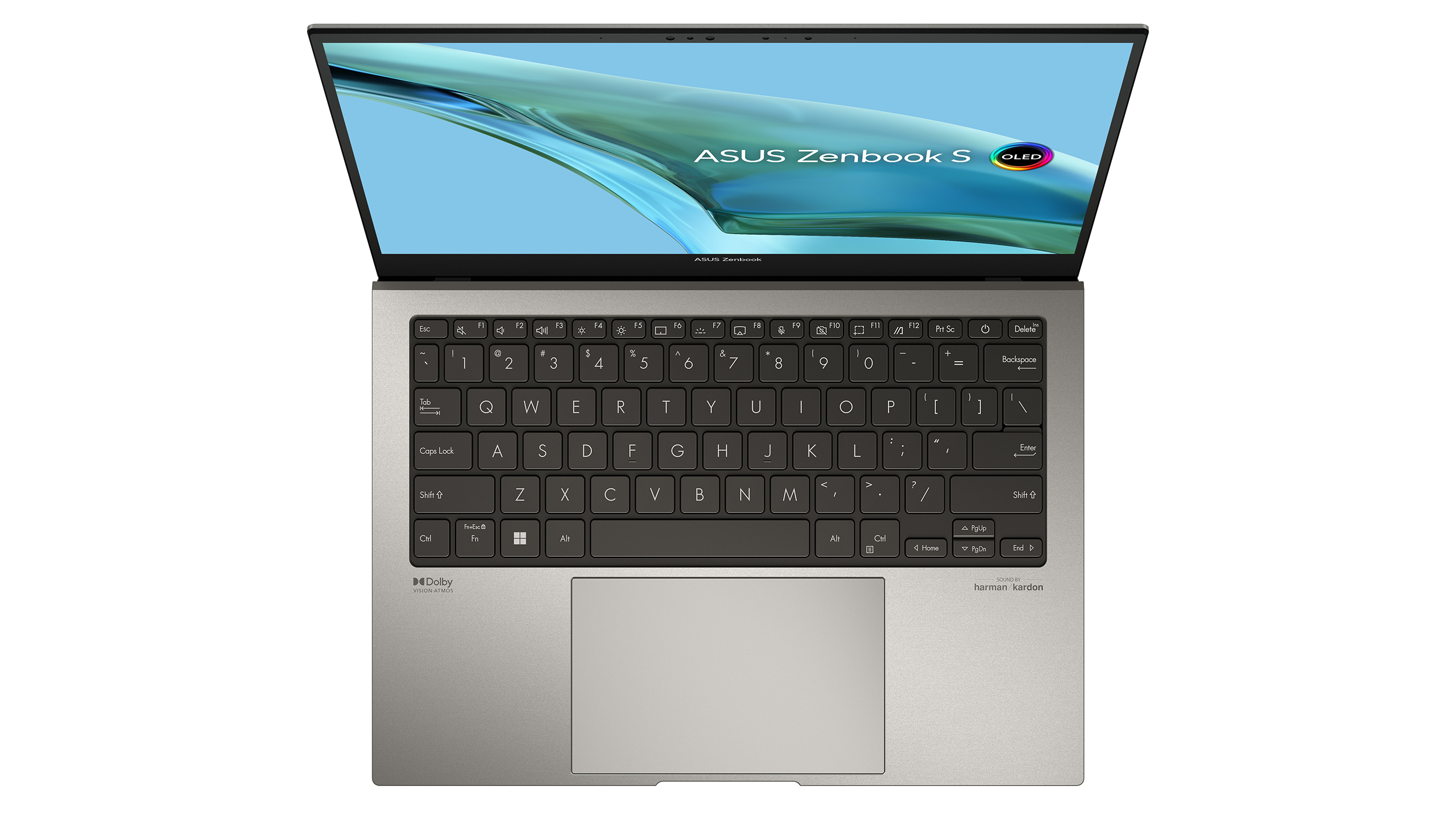
No greasy fingers – finally!
Asus’ exclusive Zenbook models have previously featured a navy blue polished aluminium enclosure that looks sleek and stylish, but also attracts fingerprints. Instead, a surface called “plasma ceramic aluminium,” which is impervious to fingerprints, is used.
The sound is Harman/Kardon, and it also fulfils the requirements for Dolby Atmos. The screen is also Dolby Vision certified. However, these certifications do not prevent the sound from the tiny inbuilt speakers from being somewhat tinny. But the sound is still clean enough to keep you entertained with a film during a break or after work.
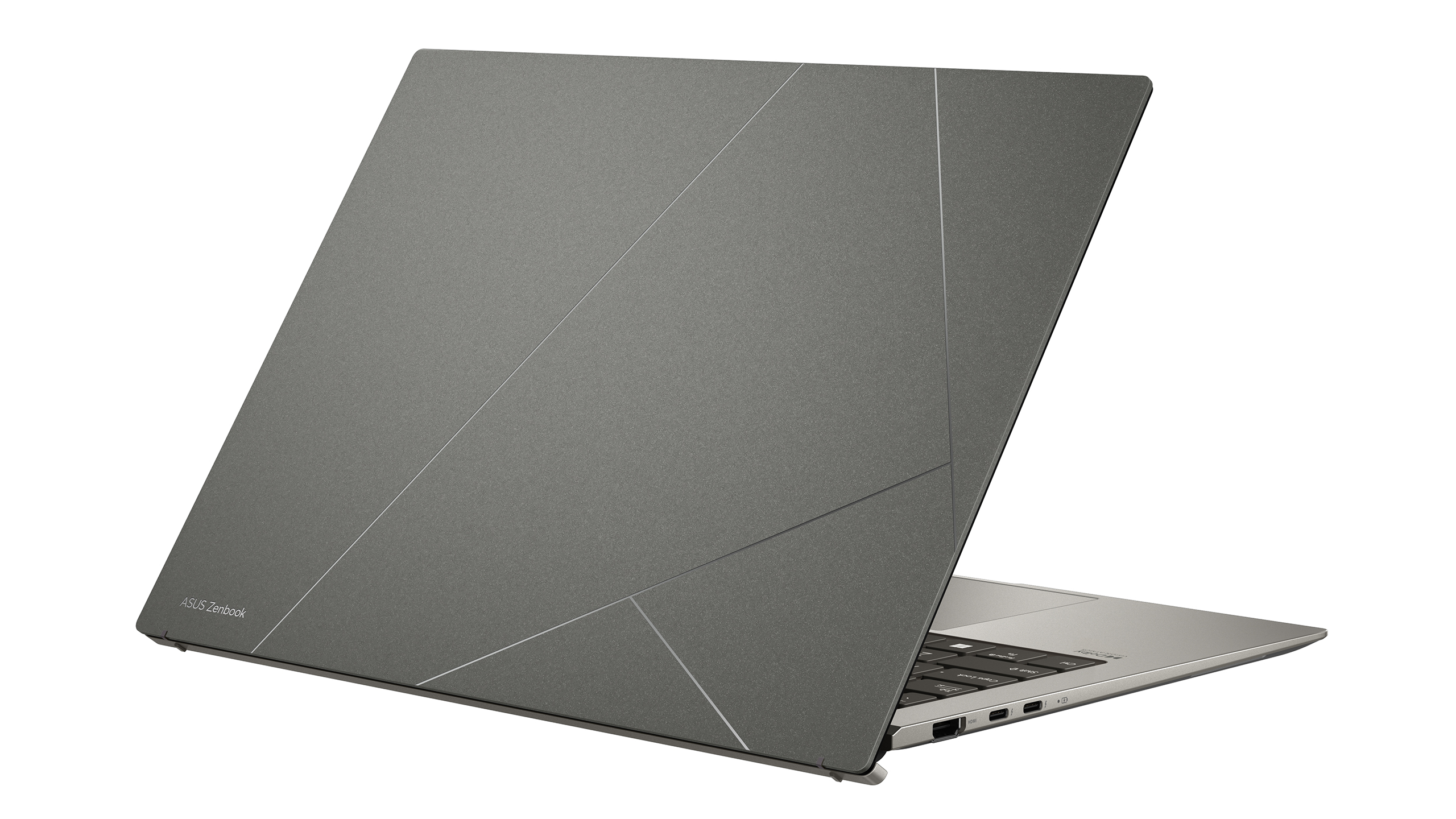
Predictable
Under the hood you will find a 13th Gen Intel Core i7 processor with integrated Intel Iris Xe graphics. In a way, the Intel EVO platform, which the vast majority of lightweight laptops today are built on, has made PC testing a little more boring. But since the goal of EVO is to ensure that laptops are fast and also boot up quickly, in the grand scheme of things, it’s an advantage. The Asus Zenbook S13 is one of the faster ones, by the way. The processor is a Core i7-1355U with 10 cores and 12 threads – and a maximum operating frequency of 4.9 GHz. With 16 GB of RAM and a superbly fast SSD, the results are excellent.
Benchmarks
The Asus Zenbook S13 is certainly not a slow computer. Of course, it can’t compete with the heaviest gaming computers. But it’s actually impressive how much power you can pack into just one kilo of laptop.
The GeekBench 6 processor test ends with a result of 7,354 in multi-core and 2,215 in single-core. This is practically the same as the much more expensive Dell XPS 13 Plus we tested in the autumn. And also the somewhat more expensive Microsoft Surface Laptop 5.
The same applies to the Cinebench R23 test, which ends with 1,680 in single-core and 6,267 in multi-core. The office application simulation PCMark 10 ends up with a score of 5,262. This means that the super light laptop has roughly the same power as most desktop PCs when it comes to common office programmes.
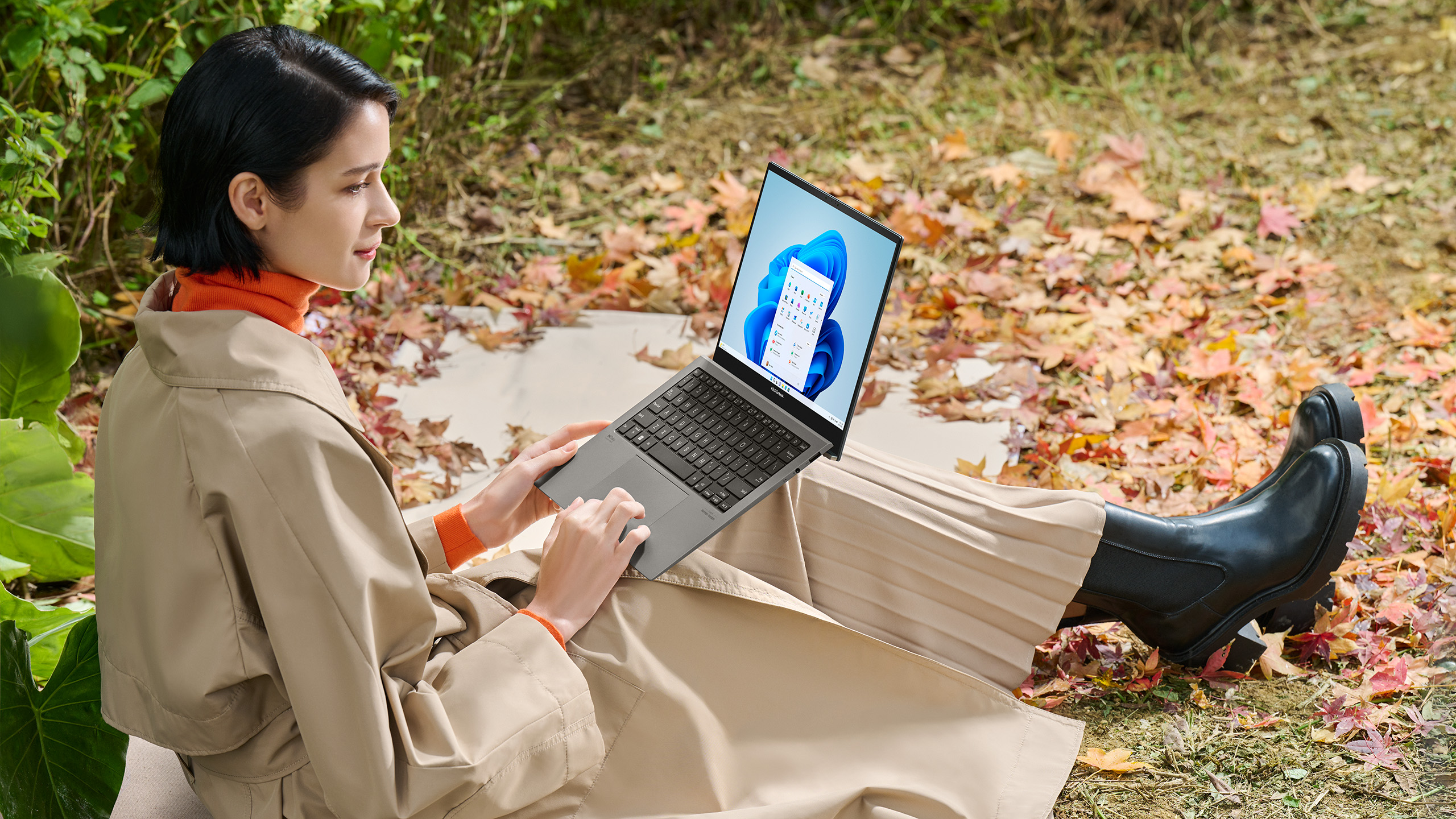
Typical integrated graphics
Just to make sure the Zenbook wouldn’t get overconfident, we also put it through the 3DMark graphics tests. With the expected result. Namely, that ultrabooks with Intel Iris Xe graphics are not meant for 3D gaming. A score of 1,564 in Time Spy is nothing to brag about. But it’s still sufficient for a game of CS:GO after work.
The battery test was more convincing. The Asus Zenbook S13 lasted almost five hours with the screen on full blast and intense office simulation before the battery quit. That’s definitely on the better end of the scale. And while it’s far from the “up to 12 hours” that Asus promises, the PC will almost certainly make it through a long day of work or study on a single charge.
Conclusion
If pure portability is the goal, the Asus Zenbook S13 is one of the most successful ultrabooks we’ve tested. Few are as compact and lightweight as this one. And most are either expensive, limited in performance – or both at the same time. The Zenbook S13 is not a cheap computer, but the price should be manageable for most people. And the machine is characterised by an almost complete lack of compromise. The screen is high-resolution and colourful in a way that only OLED screens can do. And the processor is fast enough for all office tasks. The Asus Zenbook 13 may be elegant, but it’s still not as sharply designed as the Dell XPS 13 Plus. On the other hand, the Zenbook 13 is considerably cheaper, without cutting corners where it affects performance.


1749 €
Specifications
- Processor: 1.7 GHz (4.9 GHz turbo) Intel Core i7-1355U 10 cores (12 threads)
- Display: OLED 13.3″ 2.8K (2,880 x 1,800 pixels), 60 Hz 100% DCI-P3 500 nits
- Memory: 16 GB LPDDR5
- Storage: 1 TB SSD
- Graphics: Intel Iris Xe Graphics
- Operating system: Windows 11 Home, 64 bit
- Connectivity: Wi-Fi 6E, Bluetooth 5.2, 2 x USB-C (M. Thunderbolt 4, DisplayPort), 1 x HDMI 2.1, 2 x USB-A 3.2, audio (3.5 mm stereo mini jack), HD webcam
- Dimensions and weight: 29.6 x 1.1 x 21.6 cm / 1 kg
- Web: asus.com
Benchmarks
- Geekbench 6: 7.354 (multi-core), 2.215 (single-core)
- Geekbench 5: 6.267 (multi-core), 1.639 (single-core)
- PCMark 10: 5.262
- 3DMark Time Spy: 1.564
- 3DMark Fire Strike: 4.260
- 3DMark Wild Life Extreme: 3.763
- 3DMark Wild Life: 13.180
- 3DMark Night Raid: 14.700
- Cinebench R15: 93 fps / 957 cb
- Cinebench R23: 5.510 (multi-core) / 1.680 (single-core)
- HDTach: 2.278 MB/s
- Battery test: 4:44 hours
